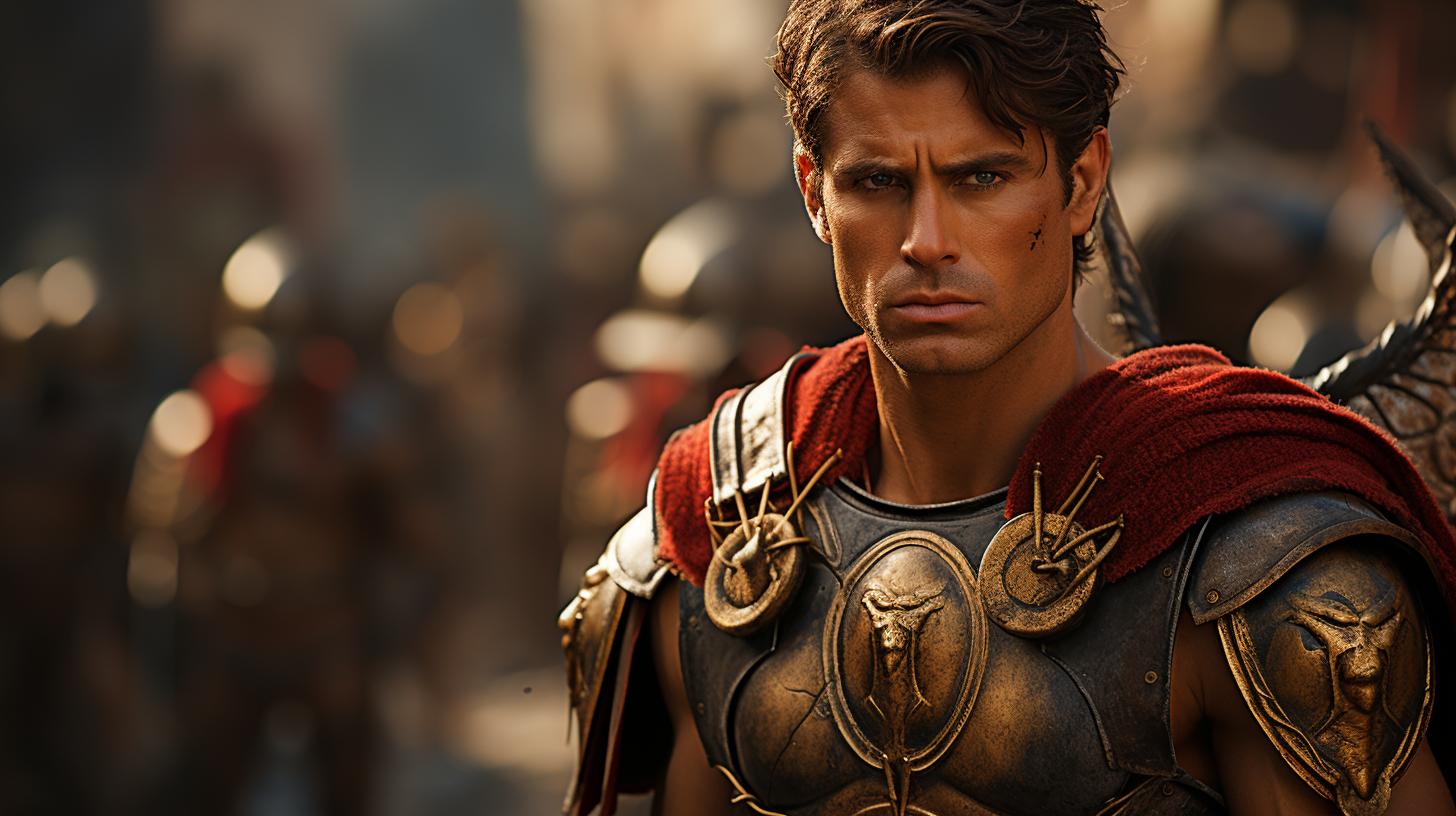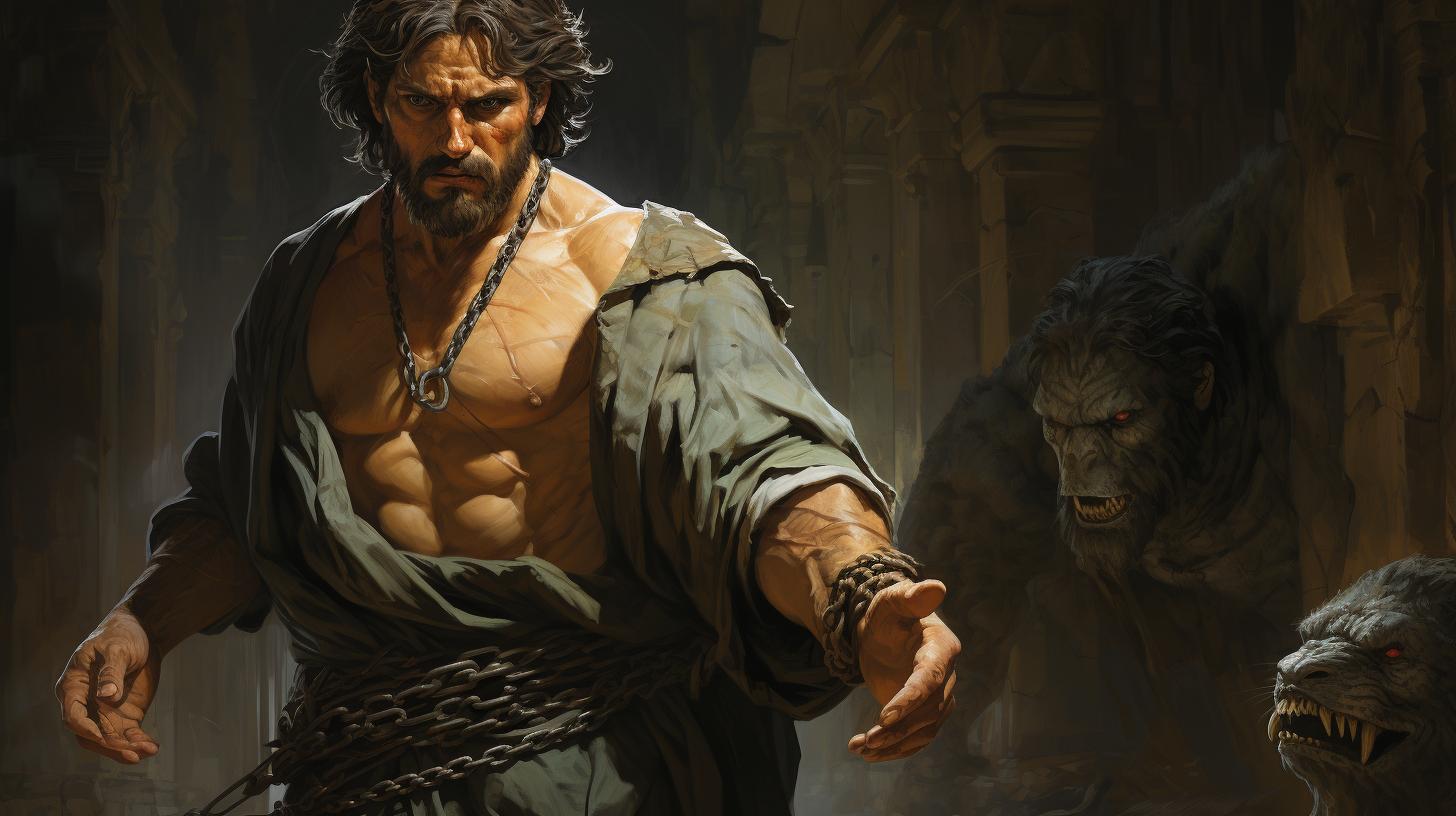Greek Mythology’s Mysterious Teumessian Fox: Unveiling the Legend

Greek mythology has a captivating tale known as the Teumessian Fox. This mythical creature was sent by the gods as a punishment, with its never-ending chase puzzling many.
Amphitryon, along with his magical dog Lailaps, attempted to capture the fox, leading to a remarkable twist of fate. The story of the Teumessian Fox holds different versions and interpretations, showcasing the descendants of Kadmos and the involvement of a heroic Atenian named Kephalos.
This legendary fox remains intertwined with other Greek myths, symbolizing themes of destiny, deception, and divine punishment. Modern references to the Teumessian Fox can be found in literature, art, and popular culture.
Ancient Greek Myths and Legends
Exploring the rich tapestry of ancient Greek mythology takes us on a mesmerizing journey through captivating tales and legendary figures. This section delves into the enchanting realm of Greek myths, uncovering their timeless significance and profound impact on literature, art, and culture.
Within this vast mythological landscape, one captivating character stands out: the Teumessian Fox.
The Teumessian Fox in Greek Mythology
At the heart of Greek mythology, the Teumessian Fox emerges as a fascinating creature with a unique destiny. Sent by the gods as a form of punishment, this monstrous fox becomes a symbol of untamed destruction and indomitable nature.
Its presence evokes both awe and fear among the people, as they struggle to comprehend its purpose and the forces behind it.
The Origins and Significance of the Teumessian Fox
The origins of the Teumessian Fox’s existence unveil a tapestry of divine intervention and human folly. Its legend intertwines with the descendants of Kadmos, the founder of Thebes, and the heroic figure of Kephalos.
Each version of the myth carries nuanced interpretations, highlighting themes of destiny, hubris, and divine retribution.
This majestic creature holds significant symbolism within the Greek pantheon, representing the intricate balance between fate and free will, as well as the consequences of disregarding the warnings and boundaries set by the gods in Greek mythology.
The Teumessian Fox and Its Punishment
The Teumessian Fox, a central figure in Greek mythology, was sent by the gods as a form of punishment, serving as a test of strength and determination for the inhabitants of Tebas.
This section explores the different aspects of its punishment, from the gods’ role in sending the fox to the quest undertaken by Amphitryon and the ultimate fate of both the Teumessian Fox and Lailaps.
The Gods’ Role in Sending the Fox
According to ancient Greek myths, the Teumessian Fox was a divine creation sent by the gods to torment the people of Tebas. Its purpose was to punish the descendants of Kadmos, and the story reveals the gods’ involvement in orchestrating this retribution.
The motives of the gods and their selection of the Teumessian Fox as an instrument of punishment remain subjects of intrigue and speculation to this day.
Amphitryon and the Quest to Capture the Fox
Amphitryon, under the command of Kreon, the ruler of Tebas, was tasked with the seemingly impossible mission of capturing and destroying the Teumessian Fox.
Despite his relentless efforts, the fox proved to be elusive, destined to never be caught. In an attempt to overcome this paradox, Amphitryon sought the assistance of the magical dog Lailaps, renowned for its ability to always catch its prey.
The Fate of the Teumessian Fox and Lailaps
In the epic showdown between the uncatchable fox and the unstoppable dog, a twist of fate intervened. Zeus, witnessing the rivalry, intervened and transformed both the Teumessian Fox and Lailaps into stone, freezing them in eternal confrontation.
This unexpected conclusion put an end to the mythical competition, leaving behind a lasting testament to the gods’ power and their role in determining the destinies of creatures and mortals alike.
Different Versions and Interpretations of the Teumessian Fox Myth
The Teumessian Fox myth has fascinated storytellers throughout history, resulting in various versions and interpretations of this enigmatic creature. Let’s explore two significant narratives associated with the Teumessian Fox: the descendants of Kadmos and the tale involving Kephalos and his invincible dog.
The Descendants of Kadmos and the Teumessian Fox
In one version of the myth, the Teumessian Fox is a divine punishment sent to wreak havoc on the descendants of Kadmos, the founder of Thebes. According to Theban accounts, the gods utilized the fox to exact retribution, leading to the exclusion of Kadmos’s progenies from ruling Thebes. This interpretation highlights the connection between divine justice and the role of the Teumessian Fox in the mythology of Thebes.
Kephalos and His Invincible Dog in the Teumessian Fox Story
Another version tells the story of Kephalos, an Athenian hero, and his invincible dog.
It is said that Kephalos possessed a remarkable hound that could capture any creature. Accidentally, Kephalos killed his wife Prokris, and in return, the Cadmeans purified him of his crime. In his quest for redemption, Kephalos tracked down and successfully captured the Teumessian Fox with the aid of his loyal companion.
However, as fate would have it, both the fox and the dog were petrified near Teumessus, freezing them in time for eternity.
These varying versions of the Teumessian Fox myth highlight the motif of divine punishment, tangled destinies, and the complex interplay between gods and mortals in Greek mythology.
Other Greek Myths and Creatures Related to the Teumessian Fox
Exploring the fascinating world of Greek mythology reveals numerous captivating creatures and tales interwoven with the legend of the Teumessian Fox.
Scylla, Sirens, and Other Legendary Creatures in Greek Mythology
Greek mythology introduces us to a plethora of intriguing creatures, such as Scylla, a multi-headed sea monster with a reputation for devouring sailors who ventured her way.
Another enchanting yet dangerous entity is the Sirens, alluring nymphs whose enchanting songs irresistibly lure sailors to their doom. These mythical creatures exemplify the ancient Greeks’ rich imagination and their belief in forces beyond mortal comprehension.
The Role of Zeus and Other Gods in Greek Myths
At the heart of Greek mythology lie the gods, with Zeus reigning supreme among them. Zeus often plays a significant role in shaping the destinies of both mortals and immortals, as seen in the tale of the Teumessian Fox.
His interventions and decisions mark the unfolding of various mythological narratives, showcasing his power and influence over the mortal realm. Other gods, like Artemis and Dionysus, also contribute to the intricacies of Greek myths, each with their distinct attributes and motivations.
Greek Mythological Locations and Their Connections to the Teumessian Fox
Many Greek myths find their settings in specific locations, which often hold symbolic significance within the narratives. In the legend of the Teumessian Fox, places like Teumessus and Thebes serve as backdrops for the epic chase between the mythical creatures.
Exploring these locations and their connections to the Teumessian Fox myth expands our understanding of the ancient Greeks’ geographical interpretations and their storytelling traditions.
Symbolism and Themes in the Teumessian Fox Story
The legend of the Teumessian Fox holds rich symbolism and explores profound themes that resonate throughout Greek mythology.
This section delves into the various symbolic meanings and themes embedded in the enigmatic tale of the Teumessian Fox.
Fate and Destiny in Greek Mythology
Fate and destiny are central concepts in Greek mythology, and the story of the Teumessian Fox exemplifies their influence. The fox, destined to never be caught, represents the inescapable nature of fate.
This theme is intertwined with the human struggle to defy or accept predetermined outcomes, highlighting the larger philosophical questions surrounding fate and free will.
The Power of Deception and Illusion
Deception and illusion play a significant role in the Teumessian Fox legend. The fox’s ability to elude capture, even by a relentless dog like Lailaps, underscores the power of deception and the illusory nature of appearances.
This theme raises questions about perception, truth, and the challenges humans face when navigating a world where reality can be obscured by cunning and artifice.
The Consequences of Hubris and Divine Punishment
The Teumessian Fox story serves as a cautionary tale about the perils of hubris and the repercussions of defying the gods. The fox’s role as a divine punishment for the descendants of Kadmos and the tragic events that unfold illustrate the consequences of pride and arrogance.
The story emphasizes the notion that mortals are subject to the wrath and retribution of the gods, highlighting the balance between human agency and divine intervention in Greek mythology.
Modern Interpretations and References to the Teumessian Fox
Throughout history, the captivating legend of the Teumessian Fox has inspired numerous modern interpretations and found its way into various forms of art, literature, and popular culture.
The enduring appeal of Greek mythology, coupled with the intriguing symbolism of the fox’s chase, has made it a subject of fascination for many creative minds.
The Teumessian Fox in Literature and Art
Authors and artists have seized upon the myth of the Teumessian Fox, incorporating it into their works to explore themes of fate, pursuit, and the struggle between man and the elusive.
In literature, the fox has been portrayed as a metaphor for unattainable desires, representing the never-ending quest for something just out of reach.
- Classic Literature: Renowned authors like William Shakespeare, Miguel de Cervantes, and Franz Kafka have referenced or alluded to the Teumessian Fox in their works, using it as a symbolic motif to convey complex themes of destiny and existential struggles.
- Contemporary Novels: Modern authors have also found inspiration in the Teumessian Fox, incorporating its symbolism into their narratives.
The fox’s unwinnable chase serves as a literary device, exploring the limitations of human ambition and the consequences of relentless pursuit.
- Artistic Depictions: Visual artists throughout history have sought to capture the essence of the Teumessian Fox through paintings, sculptures, and other art forms.
From ancient Greek pottery to contemporary artwork, the fox’s enigmatic nature has been beautifully portrayed, drawing viewers into the captivating world of Greek mythology.
The Influence of Greek Mythology on Popular Culture
Greek mythology, including the tale of the Teumessian Fox, has permeated popular culture and continues to captivate audiences worldwide.
Its influence can be seen in various forms, from movies and television shows to video games and marketing campaigns.
- Film and Television: The enduring popularity of Greek mythology has resulted in numerous adaptations and references in films and TV shows.
Whether it’s the inclusion of mythical creatures or the exploration of themes based on ancient legends, the Teumessian Fox has played a part in captivating audiences on the silver screen.
- Video Games: Greek mythology serves as a rich source of inspiration for video game developers, with characters, creatures, and storylines drawing from these ancient tales.
The Teumessian Fox, with its legendary chase and symbolism, has found its way into various video game narratives, adding depth and intrigue to the gaming experience.
- Marketing and Advertising: Advertisers often leverage the allure of Greek mythology to create compelling campaigns.
The Teumessian Fox, representing the unattainable or the pursuit of impossible aspirations, has been used as a powerful symbol in marketing, enticing consumers with its mystique.
The enduring legacy of the Teumessian Fox in both literature and popular culture showcases the timeless fascination with Greek mythology and its ability to resonate with audiences across different mediums.
.




















